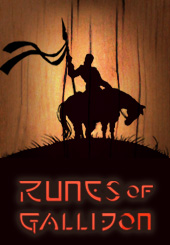Government
House Vanth, masters of Necromancy, rule the Middle Kingdom. The leader of the House is always known simply as Vanth. They are the Guardians of the Veil, the barrier between the living and the dead. They are not to be confused with illicit adepts who attempt to reanimate, or summon the dead.
The current Lady Vanth dwells in her fortress-port-city of Vaneth. She dispatches her nieces, nephews, and cousins across the Middle Kingdom, retaining an iron control over its expanse.
An army of Administrators run the day to day activities, settling minor disputes, overseeing the populace, and ensuring the steady flow of the all important trade that is the major livelihood of her population.
Terrain
From sandy beaches to towering cliffs, the Middle Kingdom encompasses the shores and islands of the Inner Sea. Mighty fortresses stand over the major ports, controlling the safe harbors. All of the seasons are mild, made temperate by the vast expanse of water. Large farms, cultivated fields, orchards and vineyards are found in the countryside around the vast port cities.
There is little actual “wilderness” in the Middle Kingdom, save the Sea. The Inner Sea knows no master.
Culture
The Middle Kingdom is the most populous and most heavily trafficked Kingdom of the Empire. People from across the continent travel through it, many finding reasons to stay. It is regarded by its citizens as the most cosmopolitan of the kingdoms.
The Imperial social Order — Emperor, Greater Noble Houses, Lower Houses, Administrators, Craftsmen, Farmers, Merchants — is strongly held here, even after The Destruction.
Horses, oxen-pulled wagons, coaches, ferries, small boats, and palanquins are all common methods of travel. Along well-maintained roads, coaching inns can be found at almost any point within a quarter days travel.
The ships and galleys of the Middle Kingdom are square-sailed and often feature multiple banks of rowers. Most of these rowers are criminals, sentenced to the backbreaking work for life. In recent times, many ships have begun to incorporate the ship designs of the Isles craft. It is not uncommon to see “eyes” painted on the prow of vessels in place of figureheads.
Shrines dedicated to the Emperor, Noble Houses, ancestors, spirits of the sea, the wind, etc., are found throughout the Kingdom along the roads, in small alcoves of the cities, and atop the stone quays of the harbors.
Commerce
“All trade travels through the Middle Kingdom.”
It is a popular expression and contains a great deal of truth. Situated around the shores of the Inner Sea that separates the Northern and Southern halves of the continent, the Middle Kingdom is the center of Imperial commerce. In its ports can be found the peoples, crafts, cuisines, delicacies, tales, products, and disputes of the entire Empire.
Imperial coinage is used for even the smallest transactions. Prices within the ports and cities of the Middle Kingdom frequently come as a shock to less traveled visitors.
Warfare
A large military force, with officers drawn from the Lower Houses and soldiers drawn from commoners, is maintained with taxes levied on all trade. This standing army is bound by the rules of chivalry, dedicated to justice, the protection of the weak, and peaceful resolution of dispute. But their lofty standards of behavior are not always realized.
Chain mail armor is the standard, with steel breastplates common among officers and nobles. Long, straight swords, heavy short swords, ornate maces and daggers, pikes, and crossbows are common weapons.
Every city and port is dominated by a massive, fortified castle on the highest ground. Since the Destruction, some scholars have begun hinting that the foundations of some of these castles are older than the Empire.
Notes
(Original source material here.)
- Login to post comments



